This article explores various types of moment connections in steel structures, offering insights on their design, function, advantages, and limitations in resisting both shear and bending forces.
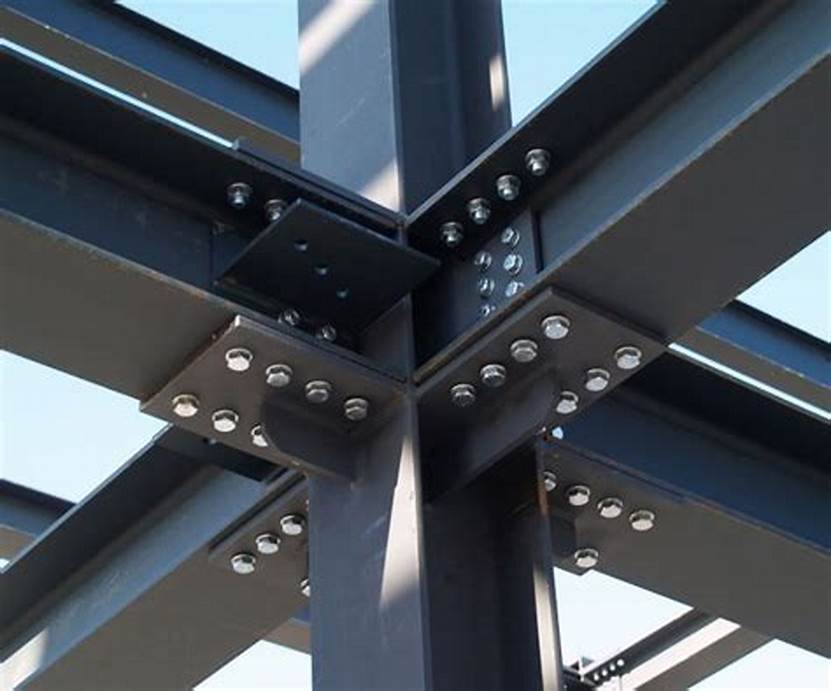
Unlike simple connections, which allow rotation, moment connections resist both shear and bending forces, maintaining the angle between connected members. This resistance to bending moments allows them to strengthen the frame, making them critical in steel frames where rigidity is required. Moment connections are common with moment-resisting frames, which help structures withstand lateral loads, such as wind or seismic forces.
Moment connections achieve their rigidity by transferring bending moments between beams and columns. This means that the connection does not just assist in transmitting vertical loads but also maintains the alignment of structural elements under load. Moment connections are used in structures where it is crucial to prevent rotation between beams and columns, which is typical of un-braced frames. As a result, moment connections help ensure that buildings retain their shape and stiffness under various types of loading conditions.
The design of moment connections is more complex than that of simple connections. Moment connections also require precision in fabrication and installation to ensure they perform as intended. There are several types of moment connections, each with unique characteristics that make them suited for specific structural needs. The most common types include extended end plates, flush end plates, bolted flange plates, haunch connections, and welded flange connections. These are briefly explained in the following sections:
1. Extended End Plate Moment Connections
Extended end plate moment connections involve welding a steel plate to the end of a beam, which is then bolted to a column (Figure 1). In this design, the end plate is larger than the beam’s width, extending beyond the top and bottom flanges of the beam. Bolts are placed at the extended sections, creating a lever arm that is capable of resist bending moments. This setup allows the connection to transfer both shear and bending forces.
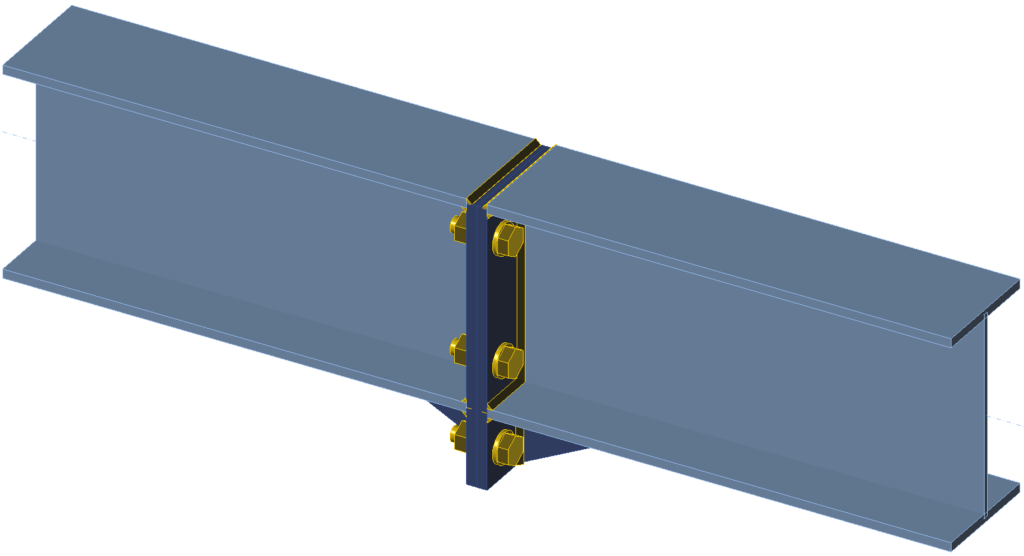
Extended end plate connections provide excellent moment-resisting capacity due to the additional bolts at the top and bottom of the plate. These bolts allow for a strong, rigid connection that can withstand substantial bending moments. The extended plate design also offers flexibility in terms of bolt configuration, allowing adjustment to the connection’s strength based on the load requirements.
One of the main advantages of extended end plate moment connections is their ease of installation. As with most steel connections, the plates and bolts can be pre-fabricated off-site, assembly on-site is therefore, relatively straightforward. This type of connection is widely used in moment-resisting frames and multi-story buildings, where rigidity and strength are critical.
2. Flush End Plate Moment Connections
Flush end plate moment connections are similar to extended end plates but do not extend beyond the beam’s flanges (Figure 2). In this configuration, a steel plate is welded flush with the end of the beam and bolted to a column. This connection provides some moment resistance but has a lower capacity than extended end plate connections, as the bolts are closer to the neutral axis of the beam.
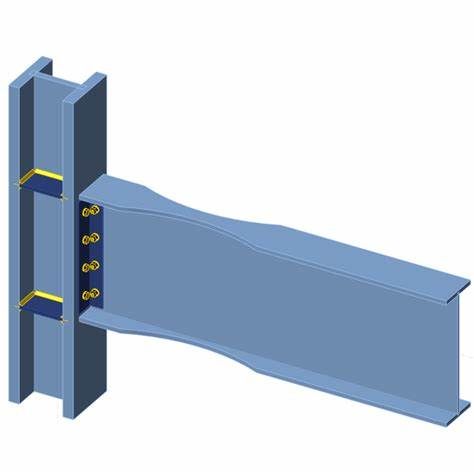
Flush end plate connections are useful in situations where limited moment resistance is required. They provide a semi-rigid connection that can resist some rotational movement while maintaining structural integrity. These connections are common in frames that do not require significant moment resistance but still benefit from some rigidity.
The flush end plate design is more compact and may be preferable in spaces where clearance is limited. Additionally, flush end plate connections are easier to fabricate and install, making them a cost-effective option for projects where significant moment resistance is not essential.
3. Bolted Flange Plate Moment Connections
Bolted flange plate moment connections involve the use of plates attached to the top and bottom flanges of a beam (Figure 3). These plates are then bolted to the corresponding flanges of a column, creating a rigid connection that resists bending moments. This type of connection provides excellent moment-resisting capacity, as the flange plates extend the lever arm and improve the connection’s ability to transfer forces.
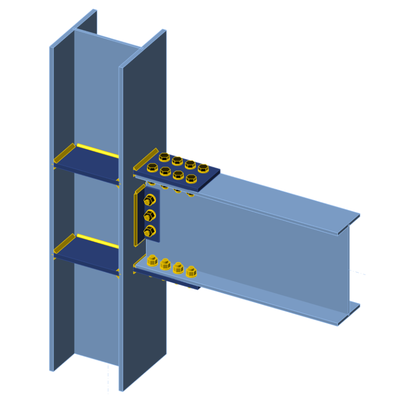
Bolted flange plate connections are particularly useful in scenarios where strong moment resistance is required, such as in seismic zones. The plates allow for flexibility in bolt arrangement, which can be adjusted to match the connection’s strength requirements. Additionally, the flange plates provide a large contact area, distributing stresses evenly and reducing the risk of localized failure.
This connection type is widely used in steel frames that require a high degree of rigidity. While bolted flange plate connections require more material and careful installation, they offer reliable performance under heavy loads. The design also allows for easy inspection and maintenance, making it a practical choice for long-term applications.
4. Haunch Moment Connections
A Haunch moment connection involve the addition of a haunch (reinforced section) at the end of a beam, where it meets a column (Figure 4). This haunch typically consists of a triangular plate welded to both the beam and column, extending along the length of the beam. The haunch provides additional material at the connection, increasing the section’s depth and, thus, its moment-resisting capacity.
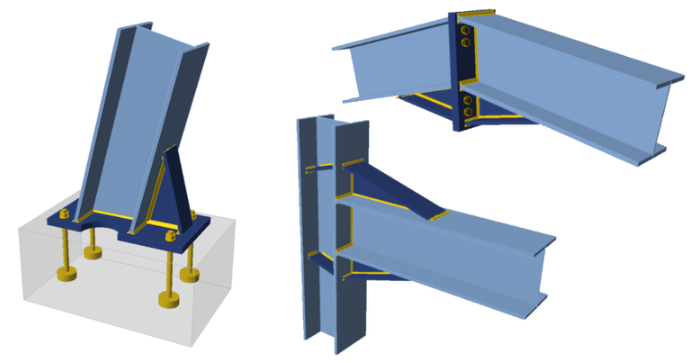
Haunch connections are especially beneficial in areas where high bending moments occur, such as near the base of multi-story buildings. The haunch strengthens the connection, allowing it to carry more moment without excessive deflection or rotation. This reinforcement helps distribute stresses and enhances the rigidity of the joint.
One of the main benefits of haunch connections is their ability to increase the moment capacity without requiring additional bolts or plates. The haunch simply reinforces the beam’s end, making it stronger at the point of maximum moment. Haunch connections are common in steel frames such as portal frames and structures designed to resist seismic or wind loads, where added rigidity and strength are crucial.
5. Welded Flange Moment Connections
Welded flange moment connections are highly rigid and involve welding the beam’s top and bottom flanges directly to a column (Figure 5). This type of connection provides a full-moment connection, meaning it resists both shear and bending forces with minimal rotation. By welding the flanges, this connection creates a continuous joint that can transfer significant moments between members.

Welded flange connections are often used in situations where maximum rigidity is required, such as in high-rise buildings or structures exposed to dynamic loads. The continuous welds create a strong, durable bond between the beam and column, ensuring that the connection can handle high stress levels. However, due to the precise welding required, this type of connection demands skilled labor and close quality control.
The major advantage of welded flange connections is their ability to provide a fully rigid joint without additional plates or bolts. This simplicity reduces the amount of material needed, making welded flange connections more economical in some applications. However, they require careful inspection to ensure weld integrity and are typically used only where strict moment resistance is essential.
Also See: Types of Simple Connections in Steel Structures
Conclusion
Moment connections in steel structures play a vital role in ensuring rigidity and strength. Unlike simple connections, which permit rotation, moment connections resist both shear and bending forces, maintaining the alignment between connected members. The most common types include extended end plates, flush end plates, bolted flange plates, haunch connections, and welded flange connections. Each type has unique characteristics, which allows selection of the appropriate connection based on the structure’s load requirements.
Sources and Citations
- American Institute of Steel Construction. Steel Construction Manual, 15th Edition. Chicago, IL: American Institute of Steel Construction, 2017.
- Duggal, S. K. Design of Steel Structures. Tata McGraw Hill Education, 2014.
- Brockenbrough, Roger L., and Frederick S. Merritt. Structural Steel Designer’s Handbook: AISC, AASHTO, AISI, ASTM, AREMA, and ASCE-07 Design Standards. McGraw Hill Professional, 2011